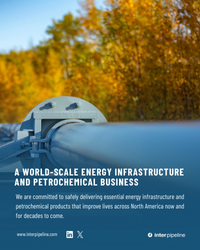Ongoing M&A activity in the upstream portion of the oil and gas industry has garnered a lot of attention, most recently regarding ExxonMobil’s planned $64.5 billion acquisition of Pioneer Natural Resources. But there’s also been a lot of consolidation in the midstream space as the companies that gather, process, transport, store and export hydrocarbons seek to gain the scale, scope and synergies they think they will need to succeed in an increasingly competitive industry. In today’s RBN blog, we discuss highlights from our newly released Drill Down report on the major midstream deals of 2022 and 2023 to date.
There are many reasons why large midstream companies might want to get bigger, either by acquiring smaller midstreamers or merging with near-equals. For many, buying another company and its set of assets gives the acquiring firm entrée to — or additional scale in — an important and/or growing production area or two. For others, an acquisition or merger enables them to provide the full range of well-to-consumer or well-to-water midstream services — say, gas processing plants, NGL pipelines to Mont Belvieu, fractionators and NGL export capacity.
It will surprise no one to hear that many of the midstream deals announced over the past couple of years involved the acquisition of companies with extensive holdings in the all-important Permian, which is by far the U.S.’s top crude oil production area and also a major supplier of natural gas and NGLs. Of course, the Permian has been a leading hydrocarbon supplier for decades, but constant improvements in horizontal drilling and well-completion techniques — not to mention an increasingly sophisticated understanding of the rock and resources below ground — since the mid-2010s has transformed the West Texas/southeastern New Mexico play into an unrivaled production powerhouse.
Ever-increasing production spurred demand for midstream infrastructure — including gathering systems (for crude, associated gas and produced water), gas processing plants, takeaway pipelines (for crude, natural gas and NGLs), storage facilities, fractionators, and export terminals — and a sometimes frenetic build-out the likes of which the oil and gas industry hadn’t seen in generations. While a significant portion of the midstream development over the past eight to 10 years was undertaken by large publicly held companies or master limited partnerships (MLPs) like Enterprise Product Partners, Energy Transfer, Targa Resources, ONEOK and Magellan Midstream Partners, many other important projects were developed by privately held midstream companies backed by private equity.
Now, with many publicly held companies looking to gain further scale and scope — and many private-equity-backed midstream companies looking to cash in on their well-timed, well-planned developments or combine with other privately held firms to improve their synergies (and maybe make themselves even more attractive M&A targets in the future) — it could be argued that conditions for large-scale midstream M&A have never been better.
Join Backstage Pass to Read Full Article










